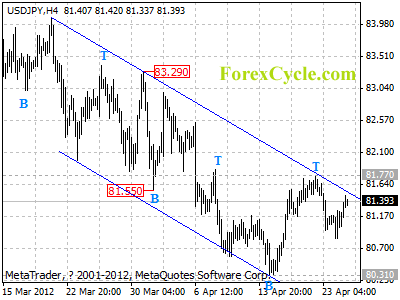London Gold Market Report
from Adrian Ash
BullionVault
Weds 25 April, 08:55 EST
WHOLESALE MARKET gold prices reversed a short dip Wednesday lunchtime in London to trade absolutely flat on the day and unchanged from the end of last week ahead of the US Fed’s monetary policy statement.
Silver bullion prices held beneath $31 per ounce, and the Euro was also unchanged after a brief rally above $1.32.
US Treasury bond prices ticked lower, edging interest rates higher, while commodities and world stock markets rose but the British Pound slipped from 6-month highs on confirmation of the UK’s first “double dip” recession since the mid-1970s.
“Any suggestions of further [Quantitative Easing] could see gold prices move towards $1670,” says today’s commodities note from South Africa’s Standard Bank, looking ahead to today’s US Fed decision and press conference.
“If the statement is unchanged from the last meeting, we expect the physical market to buy dips towards $1600 – as it has done since beginning March.”
April’s range in Dollar gold prices has been its most narrow, says analysis by Reuters precious-metals reporters, since June last year – just before the metal added $400 per ounce to set all-time records above $1900, up more than 27% by the first week of September.
This week already, open interest in US gold futures has fallen to the lowest level of 2012 so far, and this month’s sales of Gold Eagle coins by the US Mint are set for the weakest April total in 5 years, according to Commerzbank.
April’s sales already lag February this year, the lowest monthly total for gold coin sales by the US Mint since June 2008, some 3 months before the collapse of Lehman Brothers sparked a surge in global gold investing demand.
Gold prices have been “heading down towards the 2008-12 uptrend line, now at $1606.96,” says the latest technical analysis from Axel Rudolph at Commerzbank in Luxembourg.
Also pointing to the uptrend starting with the collapse of Lehman Brothers, “The 3.5-year weekly trend line support is in at $1627,” says Russell Browne at Scotia Mocatta in New York.
“So we could a late week break below here as a fresh leg lower to $1538.”
“$1624 is a critical level,” counters Phil Smith in Beijing for Reuters Technical, “and a break below would set up a decline back to $1520.”
Further ahead, however, “We expect gold prices to climb as subdued US growth reduces the market’s expectations of real [interest] rates,” says an update to Goldman Sachs’ commodities market advice today.
On the other side of the trade, and “with gold prices expected to continue to climb through 2012, we find hedging opportunities less attractive for gold mining producers at this time,” says Goldman, reversing its previous advice that miners look to defend the value of their future output by selling its forwards.
Most of what little gold producer hedging was seen last year appeared “to be related to specific gold mining projects,” said Philip Klapwijk, executive chairman of Thomson-Reutrs GFMS, at the London launch of the precious metal consultancy’s Gold 2012 Survey earlier this month.
“There seems little appetite for strategic hedging against a fall in gold prices,” he went on, after the industry spent the last decade unwinding the 3,000-tonne short position it had built up during the long bear market in gold ending 2001.
Looking again at today’s policy decision from the US Federal Reserve, “I don’t think they will announce the QE3, but Bernanke’s speech may offer some hints,” says one Hong Kong dealer quoted by Reuters.
“We don’t know, but we can see that other nations have already cut interest rates.”
With European Central Bank president Mario Draghi today attending the European Parliament’s Monetary Affairs Committee, “There is a very compelling case for further intervention from the ECB,” reckons Barbara Ridpath, chief executive officer of the bank-funded International Centre for Financial Regulation, speaking to Bloomberg.
“Many of these banks simply cannot refinance their maturing debt in the bond market.”
After the Bank of Japan issued ¥10 trillion ($123 billion) in new quantitative easing in February, all 14 economists surveyed by Bloomberg News this week “predict additional easing” when the central bank releases its latest inflation forecast this coming Friday, says the newswire.
As a result of the Yen rising again on the currency market, “Most expect an increase ranging from ¥5 to ¥10 trillion,” says Bloomberg.
Today’s UK data “support the view that the Bank of England will do a final £25 billion of quantitative easing in May,” reckons economist Philip Rush at Nomura in London.
Gold price chart, no delay | Buy gold online at live prices
Adrian Ash is head of research at BullionVault, the secure, low-cost gold and silver market for private investors online, where you can buy gold today vaulted in Zurich on $3 spreads and 0.8% dealing fees.
(c) BullionVault 2012
Please Note: This article is to inform your thinking, not lead it. Only you can decide the best place for your money, and any decision you make will put your money at risk. Information or data included here may have already been overtaken by events – and must be verified elsewhere – should you choose to act on it.







